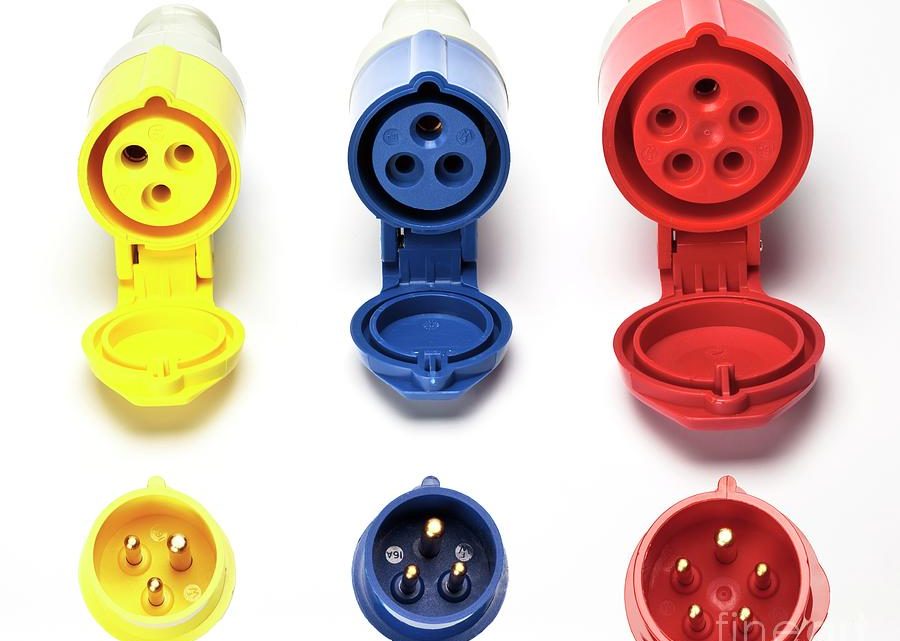
Industrial Plugs, Sockets & the Silent Strength of Quality Electronic Components
October 31, 2025In industrial environments, failure is not an option. Whether you’re powering a CNC machine, connecting a mobile generator, or wiring an assembly line, the components you choose directly affect uptime, safety, and system efficiency. Among the most underappreciated yet absolutely critical of these are industrial plugs and sockets.
Unlike everyday connectors, these are built to handle high currents, rough handling, and harsh environments. And when sourced from trusted electronic components manufacturers, they ensure that your operation doesn’t just run but thrives.
What Makes Industrial Plug and Socket Systems Different?
A standard household socket simply doesn’t cut it in an industrial setting. High-powered machines, outdoor installations, and temporary setups demand a stronger, safer connection. That’s where industrial plug socket systems come in.
Key characteristics include:
- High current capacity (often 16A to 125A and beyond)
- Robust casing made from impact-resistant, weatherproof materials
- Thermal and chemical resistance for demanding industrial zones
- Secure locking mechanisms to prevent accidental disconnection
- IP-rated protection for dust and water ingress (IP44, IP67, etc.)
These aren’t just power ports — they’re engineered for environments where failure could mean downtime, safety hazards, or equipment damage.
Where Are Industrial Plugs and Sockets Used?
You’ll find industrial electrical sockets wherever power needs to be distributed in a challenging environment. This includes:
- Factories and workshops (machinery, conveyors, welding units)
- Construction sites (temporary power for tools and lighting)
- Event setups (stage lighting, sound systems, backup generators)
- Warehouses and logistics centers
- Shipyards and ports
In these contexts, a poorly fitted or low-quality connector isn’t a minor issue — it’s a liability.
The Case for High-Quality Manufacturing
Cutting corners with connectors can be tempting — especially when budgeting for large-scale projects. But in industrial settings, the real cost shows up later: in equipment failures, overheating, non-compliance penalties, or even fire hazards.
That’s why sourcing from reputable electronic components manufacturers makes a measurable difference. Trusted manufacturers ensure:
- Compliance with IEC/IS standards
- Use of flame-retardant, UV-resistant polymers
- Precision-engineered contact pins for long life and reliable conductivity
- Rigorously tested components under mechanical and thermal stress
The result? Connectors that hold up under pressure — and keep your power lines strong.
Choosing the Right Industrial Plug Socket
Not every job site or factory floor has the same power needs. Choosing the right industrial plug and socket depends on:
- Amperage and Voltage Rating: Match your device or circuit load requirements.
- Pole Configuration: Options like 2P+E, 3P+E, or 3P+N+E accommodate different wiring needs.
- Mounting Style: Surface, panel, or flush-mounted options depending on space and access.
- Environmental Protection: Choose IP ratings based on exposure to dust, water, or chemicals.
- Color Coding and Keying: Prevent misconnection with standard color codes and mechanical keying.
Don’t Forget Compatibility and Safety
Industrial plugs and sockets often need to interface with other equipment or modular systems. Ensure compatibility with:
- Distribution boards and enclosures
- Portable power tools and machinery
- Extension systems or mobile power packs
Also, regular inspection and maintenance are key — even with high-quality gear. Look for thermal discoloration, loosened terminals, or damaged seals.
The Bottom Line
In the world of industrial power distribution, performance comes down to the details. A reliable industrial plug socket may not make headlines but it prevents outages, protects workers, and powers the backbone of modern industry.








